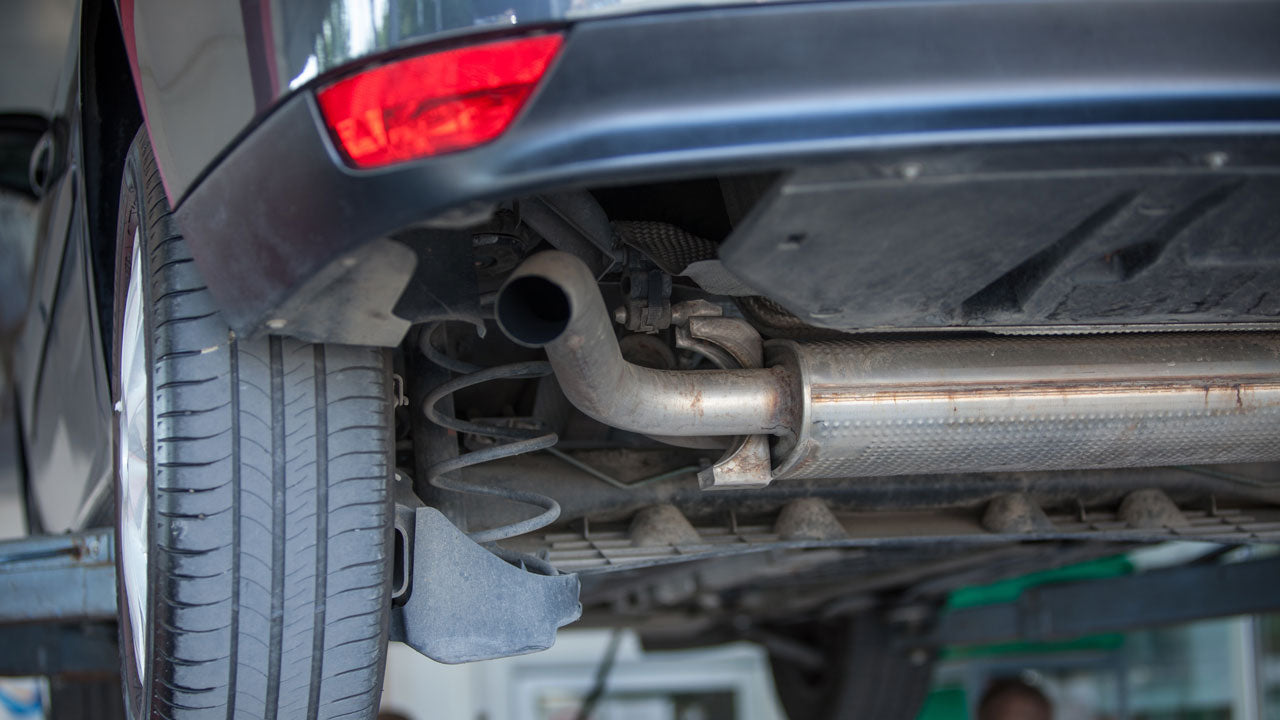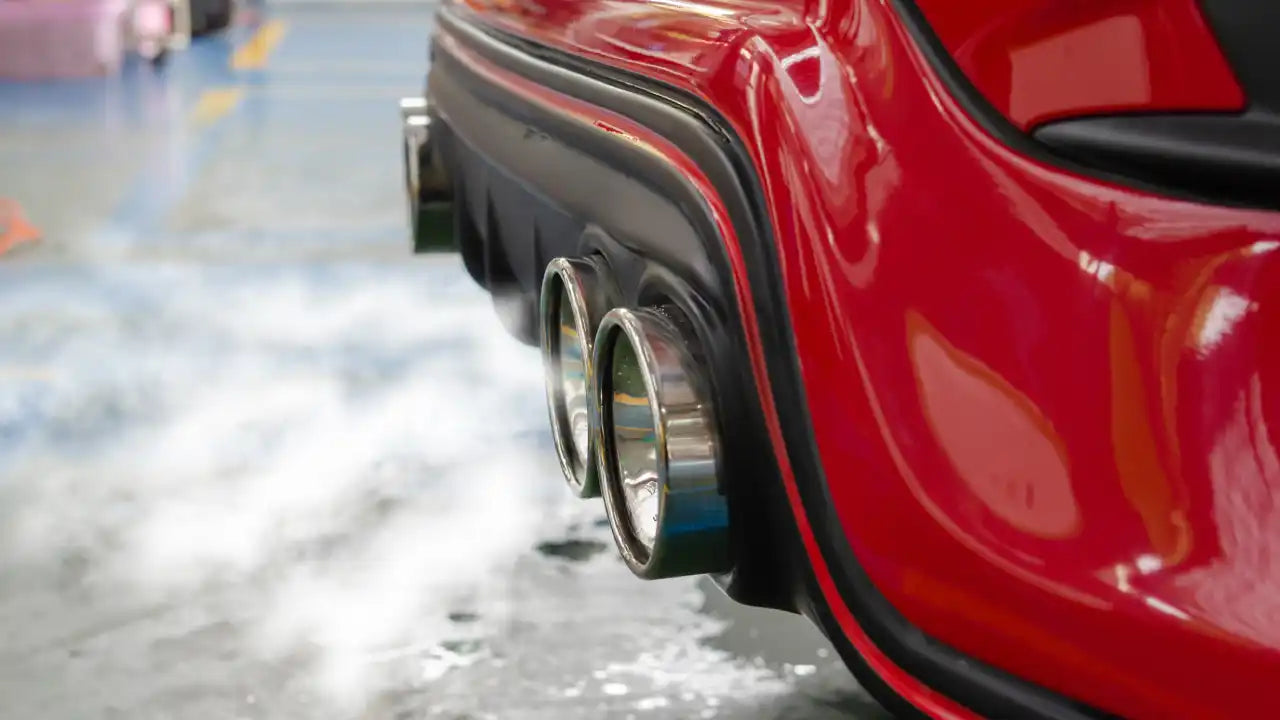The Science Behind How an Intercooler Works
Cansu ErdalShare
An intercooler is a vital component in turbocharged and supercharged engines, often overlooked by those unfamiliar with automotive engineering. It plays a crucial role in enhancing engine performance, efficiency, and longevity. In this article, we’ll delve into the science behind how an intercooler works, explaining its purpose, functioning, and benefits. Whether you're a car enthusiast or simply curious about automotive technology, understanding how an intercooler works can provide valuable insights into modern engine performance and efficiency.
What is an intercooler?
An intercooler, found in turbocharged and supercharged engines, is a device that cools compressed air before it enters the engine’s intake manifold.
Do all turbocharged or supercharged engines need an intercooler?
While most modern high-performance turbocharged and supercharged engines need intercoolers to enhance efficiency and performance, some lower-boost applications may not include them. This is often the case in smaller, less powerful engines where the benefits of an intercooler may not justify the added complexity, cost, and space requirements. In such cases, the boost levels and resulting air temperatures are typically low enough that an intercooler is not deemed necessary.

What does an intercooler do?
An intercooler reduces the temperature of the compressed air generated by the turbocharger and supercharger before it enters the engine’s intake manifold. This cooling process increases the air density, allowing more oxygen to enter the combustion chamber. This enhanced oxygen supply improves the combustion process, resulting in greater engine power, that is, increased horsepower.

How does an intercooler work?
Here’s a step-by-step breakdown of how an intercooler works:
- Compression: The turbocharger or supercharger squeezes the intake air, making it hotter and higher in pressure.
- Heat Transfer: The hot, compressed air flows through the intercooler, which acts as a heat exchanger. The intercooler has a network of tubes and fins that facilitate heat dissipation.
- Cooling Medium: For air-to-air intercoolers, outside air flows over the intercooler’s fins, pulling heat away from the compressed air. For air-to-liquid intercoolers, coolant runs through the intercooler to absorb the heat.
- Temperature Reduction: As the compressed air passes through the intercooler, it loses heat and becomes cooler and denser.
- Increased Density: The cooler air exiting the intercooler is denser and has more oxygen per unit volume.
- Enhanced Combustion: This denser air enters the engine’s intake manifold and combustion chamber, allowing for more efficient combustion, which improves engine performance and power output.

What are the different types of intercoolers?
There are two main types of intercoolers based on their cooling method: air-to-air and air-to-liquid. Let’s look at how these intercoolers work below:
How does an air-to-air intercooler work?
Air-to-air intercooler uses ambient air to cool the compressed intake air. They typically consist of a network of fins and tubes through which the hot, compressed air passes. Ambient air flows around these fins, absorbing heat from the tubes and cooling the compressed air.
How does an air-to-liquid intercooler work?
Air-to-liquid intercoolers, also known as air-to-water intercoolers, use a liquid coolant, such as water or a water-glycol mixture, to cool the compressed intake air. The hot, compressed air passes through tubes while coolant circulates around these tubes, absorbing the heat from the compressed air. The heated coolant is then typically sent to a separate heat exchanger or radiator, where it releases the absorbed heat to the atmosphere.
How does the location of an intercooler affect its efficiency?
The location of an intercooler affects its efficiency based on airflow, heat soak, space, and air path length. Let’s look at the types of intercoolers based on their location:
- Front-Mount Intercooler: Located at the front of the vehicle, typically behind the front bumper, the front-mount intercooler benefits from maximum airflow, enhancing cooling efficiency.
- Top-Mount Intercooler: Positioned on top of the engine, the top-mount intercooler uses a hood scoop to direct air for cooling. It is more prone to heat soak from the engine but provides a shorter air path.
- Side-Mount Intercooler: Installed in the fender or side of the vehicle, the side-mount intercooler uses side vents for airflow. It is less common and usually smaller, providing moderate cooling efficiency.
- Rear-Mount Intercooler: Found in rear-engine or mid-engine vehicles, the rear-mount intercooler relies on airflow directed from the back of the vehicle. It is less common and used in specific vehicle designs.

What is the difference between a front-mount and a top-mount intercooler?
Front-mount intercoolers provide superior cooling by receiving direct airflow, ideal for high-performance applications. However, they may increase turbo lag due to longer piping and require more modifications. Top-mount intercoolers offer easier installation and better throttle response due to shorter piping. However, they are less efficient in cooling, especially under high-stress conditions, due to potential heat soaking from the engine. The choice depends on performance needs and vehicle design constraints.
Which factors impact how an intercooler works?
Several factors impact how an intercooler works:

- Size and Design: The size and design of the intercooler determine its cooling capacity. Larger intercoolers typically offer better cooling but cause increased pressure drop.
- Placement: The location of the intercooler within the vehicle affects its exposure to airflow and ambient temperature variations.
- Airflow: Adequate airflow through the intercooler is crucial for effective cooling. Obstructions, poor placement, or inadequate ducting can reduce performance.
- Ambient Temperature: Lower ambient temperatures enhance the intercooler’s ability to dissipate heat, improving cooling efficiency.
- Heat Exchanger Efficiency: The efficiency of the intercooler’s heat exchanger, including the design of its fins and tubes, affects how well it transfers heat from the compressed air to the ambient air or coolant.
- Boost Pressure: Higher boost pressure increases the temperature of the compressed air, requiring more effective cooling from the intercooler.
- Usage Conditions: Factors like vehicle speed, load, and duration of operation affect how much heat the intercooler needs to dissipate and, thus, its overall performance.
- Material: Intercoolers made from materials with good thermal conductivity, such as aluminum, perform better in transferring heat.
- Maintenance: Regular maintenance, such as cleaning to prevent clogging and checking for leaks, ensures the intercooler operates at peak efficiency.
- Installation Quality: Proper intercooler installation ensures optimal airflow and avoids potential issues like vibrations or inadequate connections.
FAQs about Intercooler
Does an intercooler need a fan to work effectively?
An intercooler does not necessarily need a fan to work effectively, but having a fan can enhance its performance, especially at low speeds or in traffic.
How do you check for intercooler leaks?
Checking for intercooler leaks involves a few steps:
- Visual Inspection: Look for any signs of damage or oil leakage around the intercooler and its connections. Oil residue can indicate a leak because the pressurized air from the turbocharger often contains small amounts of oil.
- Pressure Testing: This is the most reliable method. Pressure testing for intercooler leaks involves removing or isolating the intercooler, blocking one end, and pressurizing it with an air compressor to its operating boost pressure (typically 20-30 psi). Then, spray soapy water on the intercooler and look for bubbles, which indicate leaks.
- Smoke Testing: A smoke machine can be used to introduce smoke into the intercooler while it is pressurized. Any leaks will be visible as smoke escaping from the damaged areas.
What are the signs of a failing intercooler?
A failing intercooler can manifest through various symptoms, including:
- Reduced Engine Performance: A noticeable drop in power and acceleration due to less effective cooling of the compressed air, which results in lower air density and less oxygen for combustion.
- Increased Intake Air Temperature (IAT): If you have an intake air temperature sensor, you might notice higher-than-normal temperatures, indicating that the intercooler is not cooling the air effectively.
- Check Engine Light: Fault codes related to the turbocharger system or air intake system might be triggered.
- Engine Knocking: Higher intake air temperatures can lead to pre-ignition or knocking, which can cause engine damage if not addressed.
- Visible Damage or Leaks: Physical damage to the intercooler or connections, such as dents, cracks, or oil leaks.
- Whistling or Hissing Noises: These can indicate air escaping from a leak in the intercooler system.













